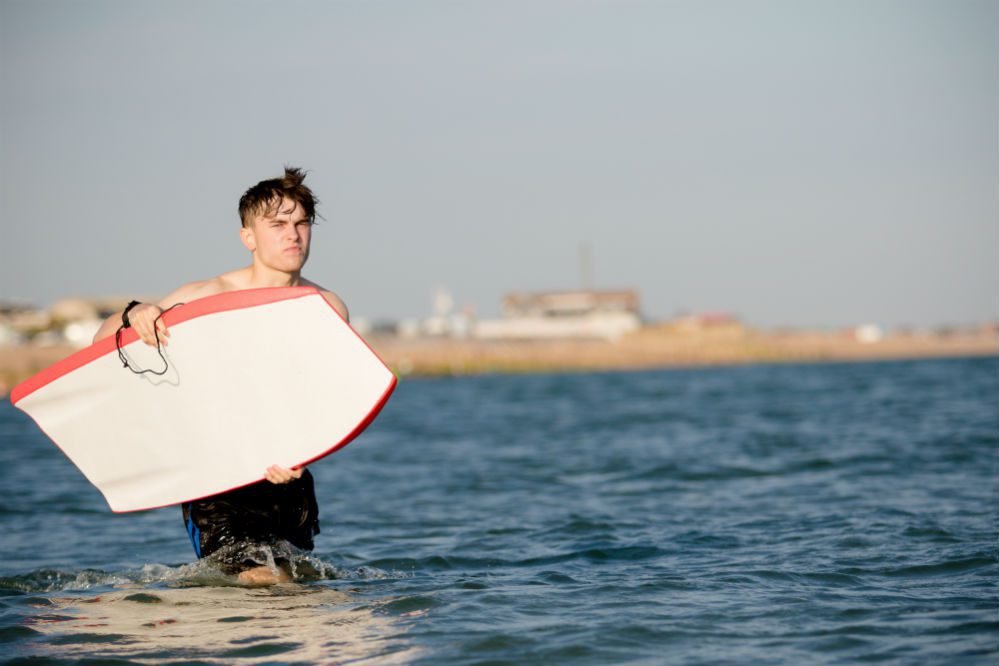
Do you need a leash for a bodyboard? Definitely, if you are asking this question, then you are a beginner. With that statement alone, you can conclude that, yes, having a leash is a necessity. It is not there as just an extra expense; it is actually there to help you with your bodyboarding activities.
There are a lot of uses for a leash when attaching it to a bodyboard, and we are going to discuss those in this article. More than that, we are also going to talk about how to spot a good leash as well as the proper placement of the leash.
Do you think that you can properly use your bodyboard without a leash? Then keep on reading, and we might just change your mind.
Contents
Do You Need a Leash for a Bodyboard?
The leash is very important because it is what is holding you and your board together. In some cases where you get thrown at the water, you need something to hold on to, and without a leash, your board might just float further away from you.
This is the worst case scenario because you have to swim to shore without any support. At the same time, having the board close to you can somehow be your safety net when you just need to stay afloat in the water.
For beginners, the use of the leash can also help with the basic maneuvering of the board. At first, it might be a pain in the butt as you are lugging around a board on your wrist, but that inconvenience will pay off while you are using the board.
Different Types of Leashes
There are generally two types of leash used in bodyboarding. The first one is a wrist leash, and the other one is a bicep leash. There is not much difference between the two except for the fact that they go on different parts of the body.
More often than not, beginners use wrist leashes because it makes it possible to have more control because the leash is closer to the board. On the other hand, bicep leashes are used by longtime surfers because they can already deal with the heavy force of the cord against their arm.
So which one is better?
In all honesty, they are actually both good to use; it is just a matter of preference. Most importantly, you should know how to work with the type of leash that you chose.
What did we mean by that? Simply that you have to make sure that you can withstand the force of the pull as well as work around the cord to prevent any tangles while you are out in the water.
How to Spot a Good Leash
Let us talk about some factors to consider when picking out a leash for your board.
- Complete Set-Up
A leash should not only come as a leash. For you to be able to use it properly, it needs to come equipped with a string, plug, Velcro or neoprene strap, and a coiled cord. Without these components, you really cannot attach the leash with the board.
- Plug
This should be at least made of plastic that is of high quality. At the same time, it should be wide and big enough to ensure safety.
A great plug is one that is also flat so that there are no extending parts of it that might get caught up in something. Lastly, it should also be big enough to have sufficient space for the string so as not to create loops.
- Leash String
Lots of us know that a leash string should be short. What others don’t know, though, is that its tie should also be tight since it is going to brace itself against harsh waves and currents.
In some cases, there are also going to be impact, and the string should be able to withstand those.
- Strap Joint
This is not really required, but it is best to at least have a brass swivel to the joint of your strap. This is helpful because this effectively helps reduce any tangles.
At the same time, if the cuff is wide enough, it will be more comfortable to use. The coil is also necessary, and it should be crafted from nothing more than a durable polyurethane material.
Leash Placement: Tips and Tricks
Here are some tips to follow for the proper placement of your leash:
- The leash should be installed on the side of your dominant hand. So, if you are right-handed, then it should be at your right and vice versa.
- For optimum control, you can place it in the middle. It should be at least seven inches away from the nose of the board.
- Know the direction of the rope so that you can estimate how close or how far you will install the leash.
- Coiled leashes are great for beginners as you do not have to adjust the installation of the leash based on the length of the rope.
- Make sure that the cuff is comfortable to wear and does not hinder any movement.
- Before going out into the water, always check that everything is attached. Having Velcro straps make attachment easier.
On the Pull of the Leash
By this time, you already have an idea where you are going to place your leash. For this reason, you are now ready to know what it takes to wear a bodyboard leash. You can expect that there is going to be a lot of pressure and pulling, but why is that?
It is because you are battling against the force of the water against the string. Not only that, but the distance between the board and the leash also adds to that pressure. Therefore, with that in mind, you should look not just for a reliable and robust leash but also a comfortable one.
This is important because that leash is going to be with you all the time while you are doing your bodyboarding activities. You would not want something that can bruise you or hinder your movements, right? So, take into consideration the convenience that a leash would give you.
Conclusion
Do you need a leash for a bodyboard? Of course. Again, it is for your safety and for the easy control of your board. With that said, the only thing left for you to do now is pick the right bodyboard leash for your needs and preferences. Good luck!
